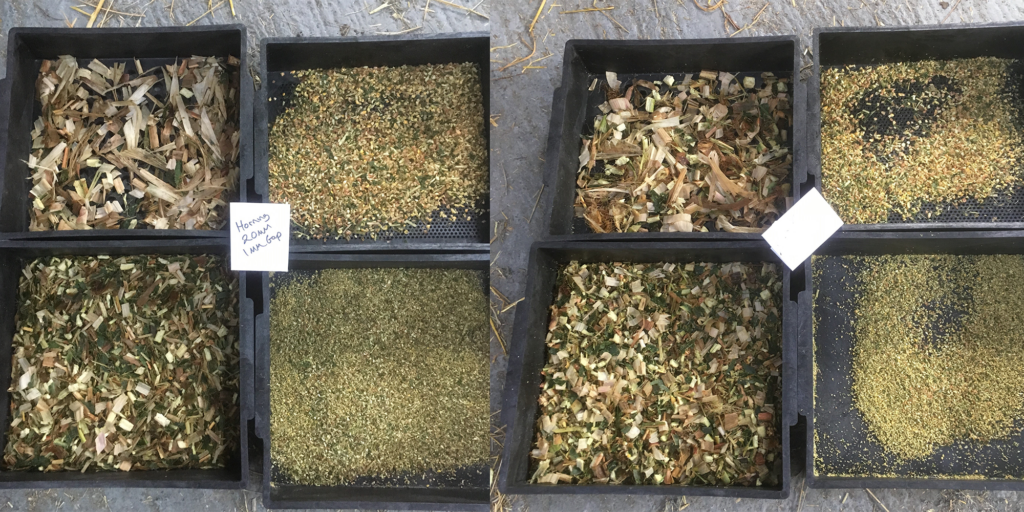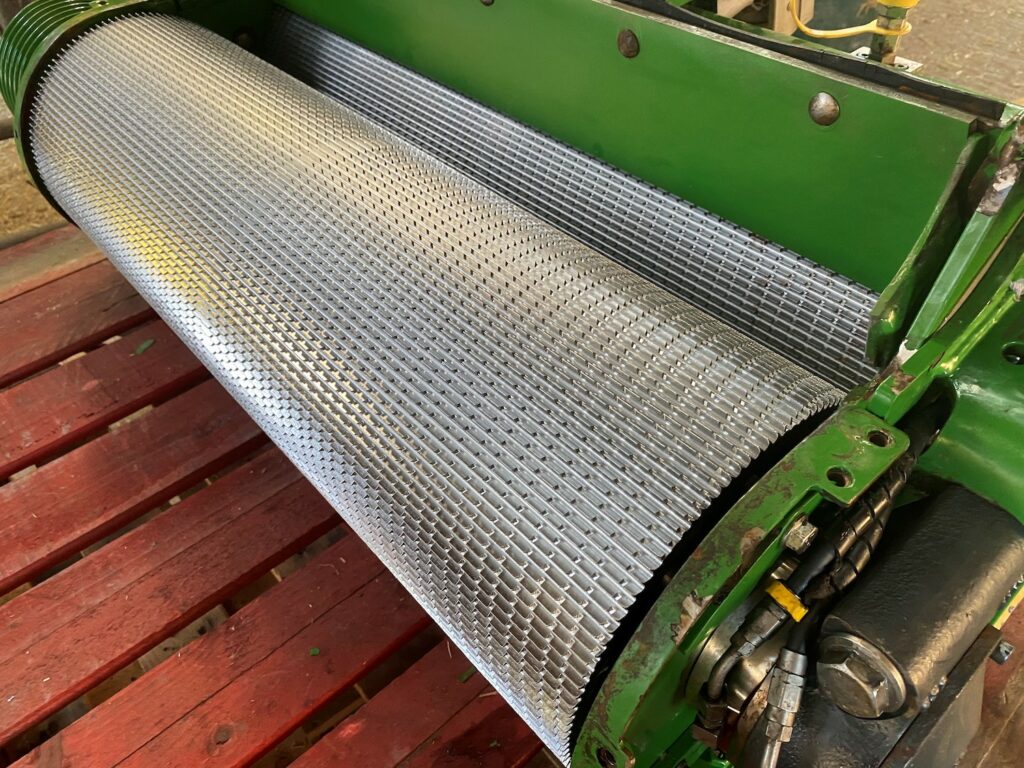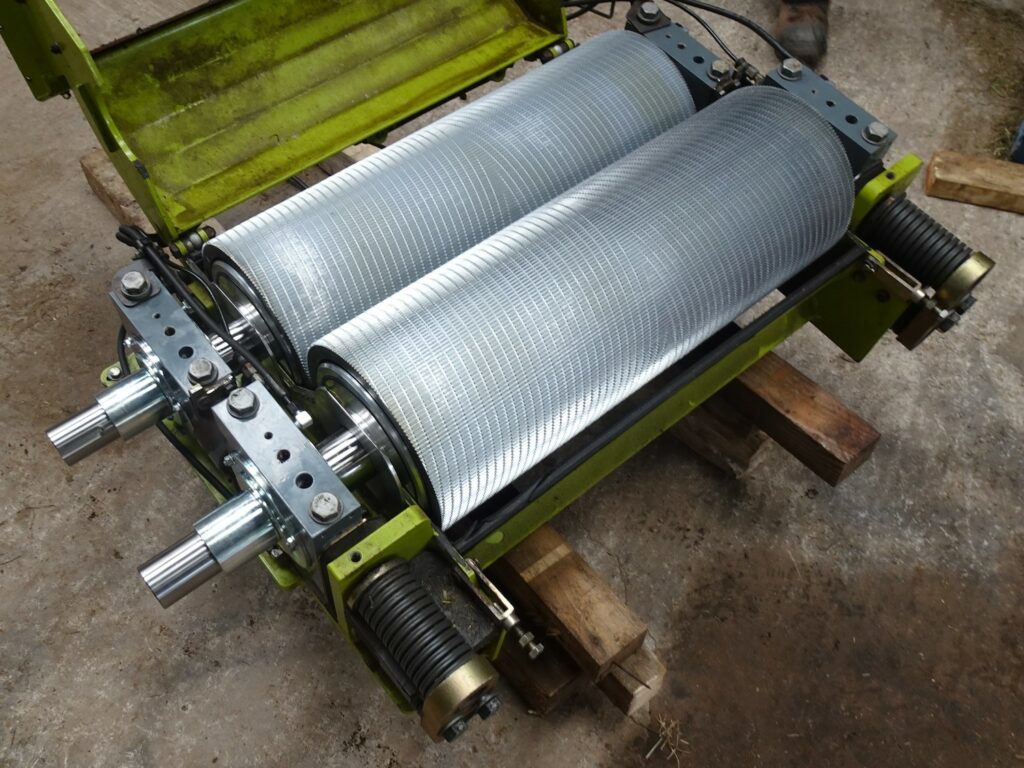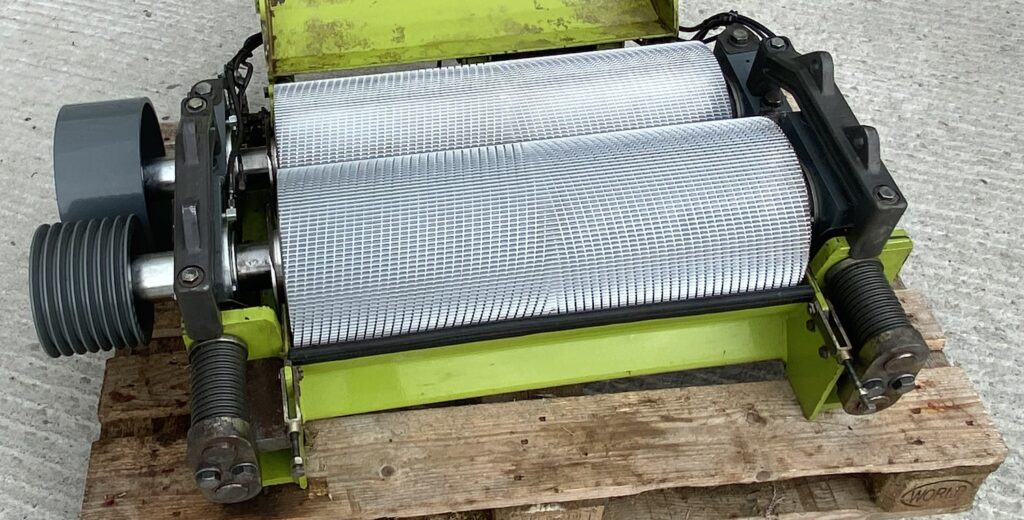Improving feed quality, yields and profitability in challenging times
23rd June 2022
With escalating fuel and feed costs, getting the most out of maize and wholecrop has never been more important. As well as reducing waste and optimising silage quality, Horning’s FiberTech Chevron rollers can improve milk yields and butterfats, says Harvesting Solutions UK general manager Alan Haycocks.
Mr Haycocks says there is currently very high demand for Chevron rollers among farmers and contractors – users report higher milk yields and butterfat, as well as higher throughput and lower power consumption. He claims US-based Horning is one of the only manufacturers that can ensure these benefits, and independent tests and customer feedback have shown the rollers have superior longevity.
Very efficient processing
Excellent processing scores are critical to ensuring high quality forage. Whilst in the past, wholecrop had to be cut when it was greener, the patented design of the Chevron allows wholecrop to be processed very efficiently so farmers can cut at a later stage, getting more starch from the plant. This increases dairy herd profitability through improvements to butterfat and milk yields.
The Horning roller range was first developed in the 90s by dairy farmer Leon Horning Sr, before being updated to an industry new development of the sawtooth roller in 2002 to effectively shred forage. The game changing, new innovation of the dual cut roller with its innovative spiral cut design followed in 2007, then Fibertech in 2013 with the spirals closer together, and finally Fibertech Chevron in 2016.
Horning rollers have generally more teeth than competitors with a special patented, sawtooth with spiral square cut to ensure grains are cracked more efficiently so animals absorb their full nutrient value, avoiding the cost of additional concentrates. Uncracked grains can also cause inflammation as they pass through to the lower gut.
How to test processing scores
Kernel processing, particle size, dry matter percentage and chop height are key factors in producing high quality maize silage. Kernel processing score is determined by the percentage of crop starch passing through a 4.75mm screen, with over 70% considered a good score.
One method is to place a sample of chopped silage into a tub of water, mix it so the kernels sink and then skim stover particles and drain the water to see the kernels. If properly processed, there should be almost no whole or cracked kernels. Another method is the Penn State sieve measuring test.
The free SilageSnap app also provides a quick visual assessment of kernels after the silage sample is sieved and offers fairly accurate scores based on how many kernels exceed the target size. Samples can also be sent to a forage testing lab, however the delay in results means harvesting adjustments cannot be made in time if KPS is less than optimal.

Two machines with the same set up, using Horning rollers (A) and a leading competitor (B), with the Horning result showing more starch at the bottom.
Better silage, less waste
Previously in wholecrop, rollers required a shorter chop length to cut grains, and when straw was cut, the resultant tube-shaped particles were very difficult to consolidate in the silage pit, resulting in trapped air and poor silage. Using the Horning system, straws can be cut longer with an ideal chop around 12–15mm. The sideways cut results in a flat particle which ensures very good consolidation, more silage in the pit, better silage and less wastage.
For maize, if you have an AD plant the rollers tear the plant more efficiently, increasing the surface area and therefore extracting more energy from the plant. Due to the design of the rollers, grains are obliterated for a higher return of energy and electricity, as well as better compaction in the pit. Chop length can therefore be increased resulting in greater throughput and lower fuel usage.
For cattle feed, these rollers process at any chop length but research with the University of Wisconsin shows the best chop length for dairy herds is 15–20mm. The tearing action on the rollers again increases the surface area to improve digestibility. Grains are pulverised to ensure the highest processing score, so all starch from grains is absorbed quickly into the cow.
The patented tooth design ensures greater throughput, less fuel usage and less belt slippage; key factors for today’s harvesting.
Mr Haycocks says vets and nutritionists have been very supportive of the product, advocating the rollers for their benefits to health, fertility, milk yield and butterfat.
Dairy farmers report better yields and butterfat
Steve Little, a farmer in Cumbria who runs a 150-cow herd, contracting business and AD plant uses the Chevron for maize, wholecrop and AD plant. Speaking to Farmers Guide about his first season using the rollers, he reported much better processing of the crop, giving a wider range of dry matter to harvest – as well as better utilisation of the crop with no grains passing through. “It’s been better in every aspect,” he commented. “Customers have commented on how the processing has improved with these rollers.”
On the AD side, they have seen a faster, more complete breakdown of fibre and better mixing – plus more energy output – due to the increased processing of the stem and straw which opens up fibres of the crop.
Steve also noted that service had been “excellent” and Harvesting Solutions has been “proactive in ensuring we get the most out of the rollers”.
Pembrokeshire farmer Geraint Davies agrees, having struggled in the past to achieve the 3.5% butterfat required for the milk contract – but since his contractor started using the Chevron rollers, butterfat has been consistently over 4%. “We had problems with maize for a number of years, especially with wholecrop we’d see the grains were passing through the animal. So, since the local contractor bought the Chevron rollers, we don’t see the grains in the manure and butterfat and milk protein has improved dramatically – so has fertility.”
US farmer Glen Zimmerman, meanwhile, is a long-time user of Horning rollers for his 300-cow herd and contracting business. After his previous forage harvester failed to achieve the required processing scores, he started using Horning rollers 16 years ago, upgrading to Chevron rollers in 2020. Since then, he reports seeing improved kernel processing, milk yields and butterfat. Compared to a competitor product he also uses, Horning is also cheaper to operate, he adds.
The rollers are available for any forage harvester on the market and can be added to new or old machines; complete frames can also be bought.
For more information contact Harvesting Solutions or visit: https://www.horningmfg.com/harvesting-solutions-ltd

John Deere refurbishment with maize rollers.

Claas with wholecrop rollers refurb.

